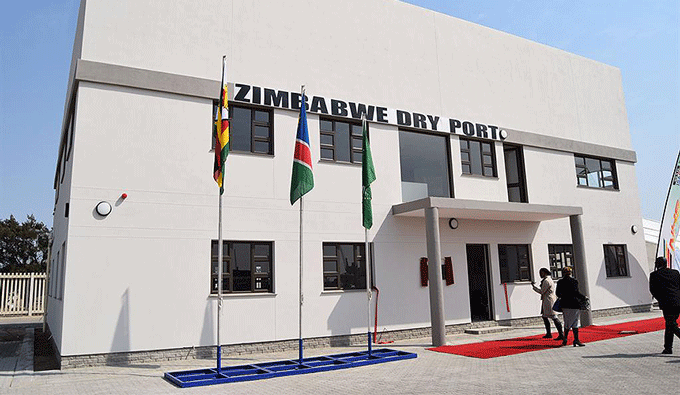Mrs Rofina Chikava, Zimbabwe’s Ambassador to Namibia, has urged local businesses to make use of the newly-opened Zimbabwe’s Walvis Bay Dry Port as part of efforts to expand business and trade opportunities between Zimbabwe and the rest of the world.
President Mnangagwa and his Namibian counterpart, President Hage Geingob, jointly opened the Zimbabwe Dry Port facility on July 26, 2019.
Also Read: Zimbabwe’s Headlands-Mayo Road Reconstruction to Commence
Zimbabwe obtained a 50-year lease for the construction of the Walvis Bay dry port infrastructure. The port is being built by Road Motor Services, a subsidiary of Zimbabwe’s National Railways, in collaboration with the Walvis Bay Corridor Group and the Namibian Port Authority.
The project is expected to give strategic and cost-effective access to the Atlantic Ocean for Zimbabwean industrial and international companies.
The construction of the Zimbabwe Dry Port in Namibia reflects President Mnangagwa’s slogan, “Zimbabwe is Open for Business.”
In an interview on the sidelines of a conference in Bulawayo yesterday to promote the dry port to the Zimbabwe market, Ambassador Chikava encouraged captains of industry to consider the dry port as an alternative for transporting products into the country.
Zimbabwe and Namibia have teamed up to advertise and sell the dry port infrastructure at Walvis Bay.
Roadshows are also organised every month to publicise the facility to key stakeholders.
To balance their returns, Ambassador Chikava urged Zimbabweans to explore the Namibian market, particularly for products like salt and seafood.
While there is presently political and social cooperation between the two countries, Namibian Ambassador to Zimbabwe Nicklaas Kandjii believes that trade has to be developed.
The dry port’s construction follows the Sadc Protocol on Transport, Communication, and Meteorology, which aims to remove economic barriers by promoting trade.
Zimbabwe and Namibia have worked on a range of regional integration initiatives under the Sadc Vision 2050 and Regional Indicative Strategic Development Plan 2020- 2030, which were endorsed by the 40th Ordinary Sadc summit on August 17 last year.
One of the three pillars of the Sadc Vision 2050 is infrastructure development to enable regional integration, which Zimbabwe and Namibia are pursuing action through programmes such as port rehabilitation.
The Zimbabwe-Namibia Bilateral Air Services Agreement is progressing well despite a brief hitch of flights being halted due to Covid-19 restrictions.
